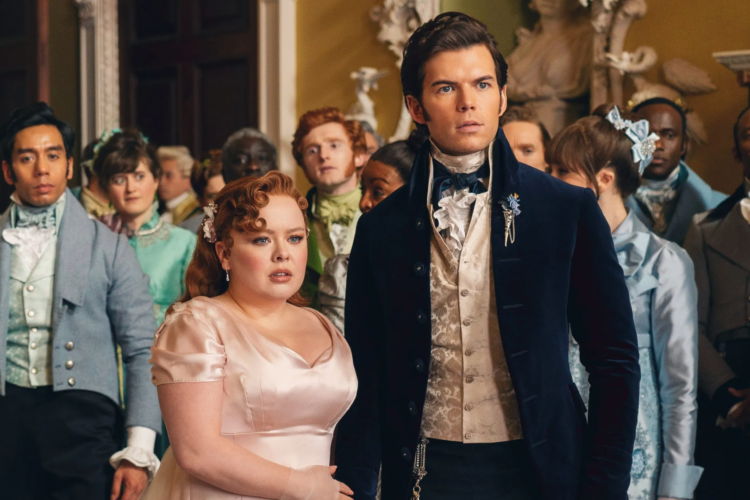Netflix’s sensational hit period drama “Bridgerton” has been named the most in-demand romantic drama TV show by Guinness World Records. Not only has the show dazzled viewers with its Regency-era London charm, but it has also become a trailblazer in the realm of race and representation on screen. The show is produced by Primetime Emmy Award winner Shonda Rhimes, famously known for her work on “Grey’s Anatomy,” “How to Get Away with Murder,” and “Scandal.” The series has sparked discourse on its approach to representing diversity with its plotlines and characters by taking historical narratives and altering their accuracy in favor of inclusivity and empowerment.
The show is set in an alternate reality of Queen Charlotte and King George III’s story. It offers a refreshing and nuanced portrayal of race by casting people of color in positions of power and influence. Characters like Queen Charlotte and the Duke of Hastings, typically reserved for white actors in historical dramas, are occupied by Golda Rosheuvel and Regé-Jean Page. This sends a message to normalize the presence of people of color in positions of power, addressing the historical exclusion of non-white experiences. Bridgerton’s bold reimagining of history on screen challenges the frequently whitewashed narratives that have dominated historical dramas for centuries. The show never claimed historical accuracy, giving it room for creativity and the opportunity to blend fact and fiction to create a masterpiece.

“Bridgerton” features a diverse cast that allows the show to actively explore themes of race and identity through its characters. In season 2, the plot centers on the love story between Anthony Bridgerton and Kate Sharma, whose family is of Indian descent. The show subtly touches on the colonial history between the UK and India. Many assume that Regency England was exclusively populated by white people due to traditional narratives portrayed on screen, but this is not the case, as expressed by Durba Ghosh, a professor of British Colonialism at Cornell University. India was under exploitative control by the British state during the 1800s, closely linking the two countries in culture, trade, and history. The show’s inclusivity in terms of race provided an opportunity to showcase the beauty of cultures that are not well represented in Hollywood. This is evident in the colorful Sharma clothing, traditional wedding ceremonies, the making of a proper chai, and the use of oil to care for hair, as practiced in many Asian countries.
The show does not limit its representation of characters to race, although that is one of its most compelling aspects. In season 3, the storyline follows Benedict Bridgerton’s exploration of his sexuality, which was deemed taboo and socially unacceptable at the time. The female protagonist of the season, Penelope Bridgerton, played by Nicola Coughlan, stirred significant attention as women of her body type are not traditionally represented on screen as love interests. One columnist at The Spectator even went as far as describing Nicola as “not hot” due to her size. Despite the body-shaming comments, season 3 was a hit, and many people are gushing over the steamy scenes between the main love interests, which calls into question the credibility of the columnist’s claim that women like Nicola, who have “perfect breasts,” are not perceived as beautiful and sexy by the ton.
However, the show has also received critiques, with some arguing that its approach to storytelling oversimplifies the complex implications of race and historical oppression. Nevertheless, “Bridgerton” has opened the table for discussions on race and representation in the media. By embracing diversity on screen, the series sets a precedent for future productions. It proves that inclusive storytelling can resonate with a wider audience, spark important conversations, and reshape historical narratives, challenging traditional societal norms.
Roselle Torres
If you found the article interesting, I also recommend this:




